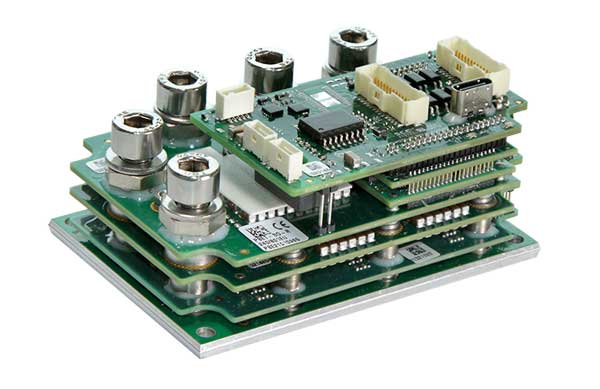Safety functions
Motion systems today employ functional safety to protect machine operators, equipment, and productivity. Safe Torque Off (STO), for example, is a built-in software function that interrupts the torque-generating signals sent from the drive to the motor without the need to cut power to the drive. STO acts as a safeguard that effectively halts the motion of the system, thereby preventing any accidental movement that may cause harm to personnel or damage to equipment. STO speeds restart and reduces stress on the drive caused by the use of relays and emergency stops. (It is important to note that STO only removes torque, leaving the load to the coast. For a more immediate stop, it is necessary to engage active braking.) For instance, an industrial conveyor system equipped with an STO function can prevent unexpected movements by halting the motor instantly, thus averting any hazardous incidents.
Several other safety features can work in conjunction with STO to limit speed, position, and torque. These safety features have paved the way for collaborative robots. Other use cases may be to improve industrial operations efficiency, such as clearing jams and cleaning machines.
To ensure that the drive is compatible with any safety system, be sure to check the control architecture. The protocol needs to be fast enough to minimize risk appropriately while offering the necessary safety functions and matching the physical layer and communication protocol of any external sensors. Whenever a communication interruption occurs, a companion safety protocol is designed to detect the interruption and return the system to a known safe state.
It is also worthwhile to note that not all drives are advertised as safety-rated, and not all applications require that. For example, collaborative robots, which we mentioned earlier, must have safety-rated compartments, which mandates the use of safety-certified servo drives.
The most reliable drives to choose from are those certified by a well-known product certification entity, for instance, TÜV, which reviews not only the product but also the entire manufacturing and testing process.
Special considerations
Choosing a drive is incomplete without addressing harsh environments. Automated forklifts expose electronic components to high levels of shock and vibration, as well as contamination risks. For underwater remote-operated vehicles (ROVs) to succeed, they must survive prolonged immersion and high pressures. The application evaluation process is key to success.
Ensure that you choose units that are rugged enough to handle your application. It is important to work closely with your vendor and take the necessary time to understand the specifications. A device with IP67 does not mean it is waterproof, but it does mean that it can withstand immersion up to a depth of 1 m for 30 minutes. It’s a very different kind of spray compared to the 100 kPa sprays of IP66 and the 10 MPa sprays of IP69K.
Contamination isn’t the only factor to consider. Unmanned aerial vehicles (UAVs) that operate at high altitudes can be exposed to high degrees of radiation. In such cases, analog drives might be more robust than digital versions, which can be vulnerable to single-event upsets and more severe damage. That said, the trade-off is limited functionality in terms of lack of communication protocols, etc. Choosing a digital drive and protecting it in an enclosure may ultimately be the best solution.
Finally, consider the duty cycle. Applications that run 24/7 limit electronics’ lifespan. Ultra-low duty cycles can be challenging. A guidance system on a missile may go unused for years but if it is called into service, it needs to operate. Be sure to find a drive designed to meet performance requirements.
Conclusion
Drives don’t just power motors, they provide a powerful opportunity to optimize a motion system. Proper drive choice enables an OEM to differentiate the product from the competition. This is whether through performance, operating lifetime, reliability, cost, or all of the above. The process starts with gathering details about the application and the system as currently designed. You should research the options, but most importantly, you should work closely with your vendor. They have vast experience across a range of applications and can help you choose the right drive for the task at hand.
For your convenience here is a short checklist of questions you should always consider while choosing a servo drive for your machine:
1. What is your host type (e.g. PLC, PC, HMI, etc.)?
2. Are you using centralized control (e.g., motion controller or PC) or distributed control (e.g. smart drives)?
b. If distributed control, how is the host communicating with the drive (EtherCAT, CANopen, RS-232, RS-422, etc.)?
3. How many axes are in the system?
4. What are the types of motors (manufacturer and model/part number)?
5. What is the supply voltage for the system?
6. What is the type of feedback for each axis (manufacturer and model/part number)?
7. Are there any special environmental or application requirements?


